The 50 States Project is a series of candid conversations with interior designers across the country about how they’ve built their businesses. This week, Lexington, Kentucky–based designer Benjamin Deaton tells us why he keeps two handymen on staff, how a retail store helped him target new clients and why he’s not obsessed with book deals or fabric lines to know he’s made it.
Were you always drawn to design?
Absolutely. My mother has the most impeccable taste and style, and there was always a project or she was always redoing something. When I was growing up, I remember she painted a wall for a holiday—I came home and the back of our built-ins were light blue to go with the cranberry decor she had selected for Christmas for that room.
When I was transitioning from a tween to a grown-up room, I had that Ralph Lauren suede paint on the wall, and my mom found this huge old mahogany mantel—we upholstered the interior where the fireplace opening was and made it into my headboard. She and I share a passion for anything Ralph Lauren, and blue-and-white Americana. She always said you need one piece of black furniture in every room to ground the space, and she taught me that you could have really beautiful and quality things, but you could also find vintage items or go to junk stores and figure out what you could salvage or repurpose. I give her a lot of credit for making me think in that way.
Did you always want to be a designer, then?
Interior design was not my parents’ dream for me—they always said I could do it on the side. I was going to be a corporate lawyer. In college, I double-majored in finance and political science. When the crash of 2008 happened, the law firm I had been working at during those first couple years of college started eliminating positions. I was about to start studying for the LSAT, and I thought, Why am I going to take on three years of law school to come out with no job?
How did you pivot?
Because the political science portion was in the arts and sciences program, I had taken art history, textiles and structures classes for some prerequisites. I was able to switch it around and take a fifth year to get my business degree, which satisfied my family, and then a degree in fine arts.
Toward the end of that fifth year, I helped a friend with a charity event and did all the decor for it. Someone at the party said, “We’re looking for people to hire.” It wasn’t the kind of business I was looking for—it was a furniture store that did decor as well, like “free design with purchase”—and I’d never worked retail or in a public-facing role in my life, but it was a job to get my foot in the door in this field. I was there for about six months, then got hired by a firm.
Were you actively looking to make a move?
To backpedal, I ended up being an assistant to one of the principal attorneys at the law firm I worked for throughout college. He was doing this big historic remodel on his house, and as his assistant, I ended up as the liaison for that project. A few years later, I ran into the designer who did his house, and she said, “I just fired my designer last week and I’m looking for someone. Where are you? What are you doing now?” I started there two or three weeks later. They were really more of an architecture and remodeling firm, but I was able to get my ASID accreditation through her, and she taught me how to run a job, about beam loads, and a lot on the construction side.
She had done interiors, but it wasn’t a core part of their business. I helped start up the interiors part, and we began doing soup-to-nuts, full-scale projects. Before, it was just the hard finishes, kitchen and bathroom design. Unfortunately, she had some health complications—I had started to see the writing on the wall when a client said, “We love working with you, but we’re firing the firm. We have all these projects that we want you to do. Would you consider doing it on the side?” And I said, “No, I couldn’t do that.” So they said, “Well, then we think it’s time for you to go out on your own.”
Wow—a client told you that?
Yes, and it’s a client who is still with me today, and who has become one of my closest friends. I’ve done numerous projects for them to date, and I opened my company on a $25,000 contract with them.
Were you ready to take the leap?
I remember the night before I went in and told my boss that I was leaving, my stomach had never been in more knots. My partner at the time was even more concerned—worried that we were going to be destitute. But one of my really good friends was like, “Do what you love and the money will come,” and it has. While we’re a midsize firm now, I’ve had the “slow and steady wins the race” mindset about it. We’re now just taking on a new design associate, and we just moved into our new studio where everyone has their own offices. A lot has happened over the last 18 months professionally—for me and my firm—but it finally feels like I am settled and that I’ve made it.
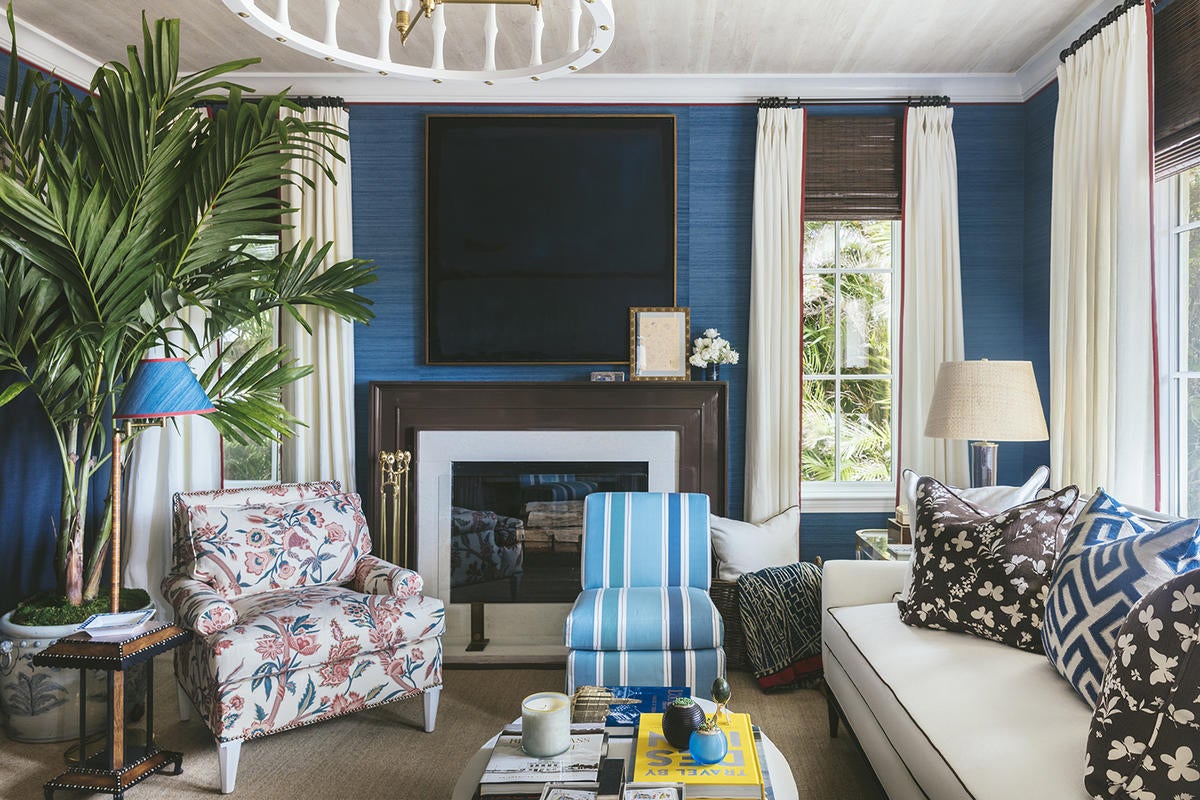
What was the turning point for you?
I did the Kips Bay Decorator Show House in Palm Beach, Florida, last year. I was the last entry, I was two weeks behind, and I didn’t even have a publicist. A friend and mentor of mine said, “You should talk to Melissa Mittag over at Collyer and Company.” She does business consulting and PR, and it was the best money I’ve ever spent!
You started working together as you were coming up with your concepts for the showhouse?
Yes—when I was already four days late to Veranda for my rendering. I was scrambling to figure out everything, and it was very stressful. Plus, we were so busy at work with the COVID boom, and trying to keep clients happy. I was on this wheel of traveling to New York, Kentucky, Palm Beach and Louisiana, and trying to keep everything going was just such a blur and a whirlwind. The morning of opening day, a bunch of friends started texting me, “Congrats!” I’m like, “What’s happening?” Someone said, “Open your phone, and go to Veranda.com.” We had the lead cover photo on their homepage, and they kept it up the whole month of April. I was so emotional, I cried. I had been in publications regionally, but I’d never been at this platform or level—to be selected out of 19 incredible designers in that house was the most incredible experience, and it felt like it was all worth it!
Was that a turning point for your business, too?
Since then, everything has just exploded. People ask me, “Is the money that you put into doing the showhouse worth it?” I think it has to be at the right time in your career—and you have to financially really be able to afford it, because it’s a six-figure investment, and that’s after I begged and borrowed.
My vendors were so good, and they came to bat for me so quickly. Nobilis was like, “Absolutely,” and shipped my ceiling paper immediately. The Shade Store was so great—even when I changed my curtains at the last minute, they were like, “Amazing, no problem!” Some of my vendors on Dixie Highway were like, “Sure, borrow it for the month, we don’t care.” Stacy Kunstel at Dunes and Duchess had things that take four or five months to produce for me in three weeks; Christopher Spitzmiller had lamps produced in two weeks for me. It was amazing.
That is amazing. But that response—what I hear is that vendors showed up for you, but also that you’ve been investing in your vendor relationships for a long time.
Absolutely. That’s one thing I did when I was first starting out: I looked at investing in lines that I could have exclusives with around Lexington or find the deepest discount. So I went to Chaddock and Hickory Chair and became a stocking dealer with them so that I could give my clients a break and a good value and still make money. I love Bunny Williams Home and have been open with them since the start—we are an exclusive wholesale dealer for them in the Lexington area, and the same with Christopher Spitzmiller. Now, when they first told me how many lamps I was buying and selling…
I’m guessing it’s a lot of lamps?
It is. But Chris was like, “If you believe in the product, it sells itself,” and that’s so true. Not every project gets his lamps—or it may only get a pair, or a single that we fold in—but it does enhance the overall quality of the project. I really looked at increasing how I could make the most money and still get a really good design out of it.
So when people ask if you get business from the showhouse, what’s your answer?
We have gotten some direct correlation projects from that, but I think you have to look at it in different terms. For me, I think it definitely helped raise my national profile. It gave me more credibility around what we charge and how we operate. It showed that we are among this group of qualified individuals, and we can produce this product for you.

You opened a shop a few years ago, but were those stocking dealer partnerships something you pursued before you were doing retail?
Yes. We always had a showroom downstairs in our old office, but it was just for our own product. I started investing in these lines because I couldn’t find unique things to add that final layer of a project here in Lexington—things like Assouline books that, for whatever reason, stores that I had great trade partnerships with had stopped carrying. When I asked, they were like, “Well, you’re the only one that buys it.” So I was like, “OK, well I’ll just go get it myself.”
That’s when we started investing in having tons of Visual Comfort lamps, or tons of Assouline or Rizzoli books that you could layer a coffee table with, or some Ryan Studio pillows in various colors to pull at the last minute. We had a really beautiful little curated room that was decorated with some upholstery and a couple of antiques. We’d sometimes bring a client down there and show them how a chair would sit, but we really weren’t promoting it. It was just for us.
But as we were growing as a company and I was really getting out there in the community, a lot of my clients would say, “This person would love a pair of these lamps—do you only take on large projects?” So at first, I started BD Home as an extension of our brand and to offer clients, friends of clients and people who wanted to get a small taste of things that we might place in people’s homes, but who didn’t want to do a whole project with us.
Did you start online, then?
It launched online in 2019. Then, in 2020, we moved into a new office space on Romany Road and launched a brick and mortar that was public-facing. It was smaller than we wanted, but we had moved our design offices there because of COVID—this is back when we thought the world was shutting down. Then people started shopping at home and online, and we started selling lots of stuff through Instagram and shipping all across the country every day. We also developed a growing customer base here in Lexington—certainly beyond what I used to think of as our customer base—now that they’re able to come into our store and get a sense of our style when they walk through that door. We also have things that we can pull from as a design team for that final layer. So many of our projects are soup to nuts, down to ordering the cocktail napkins in the bar pantry.
How do you attract that kind of clientele?
A lot of the projects we do are secondary and tertiary properties because of the equine industry here. The clients are buying these farms—whether it be a sport horse farm, a thoroughbred farm or a standardbred farm—and they already have homes elsewhere, so we’re starting from scratch. I believe that homes should be collected, so we’re looking to give that warm, “lived-in” feeling with cool vintage pieces—maybe a really nice copper drum by the fireplace to put firewood in—to create a home that tells a story.
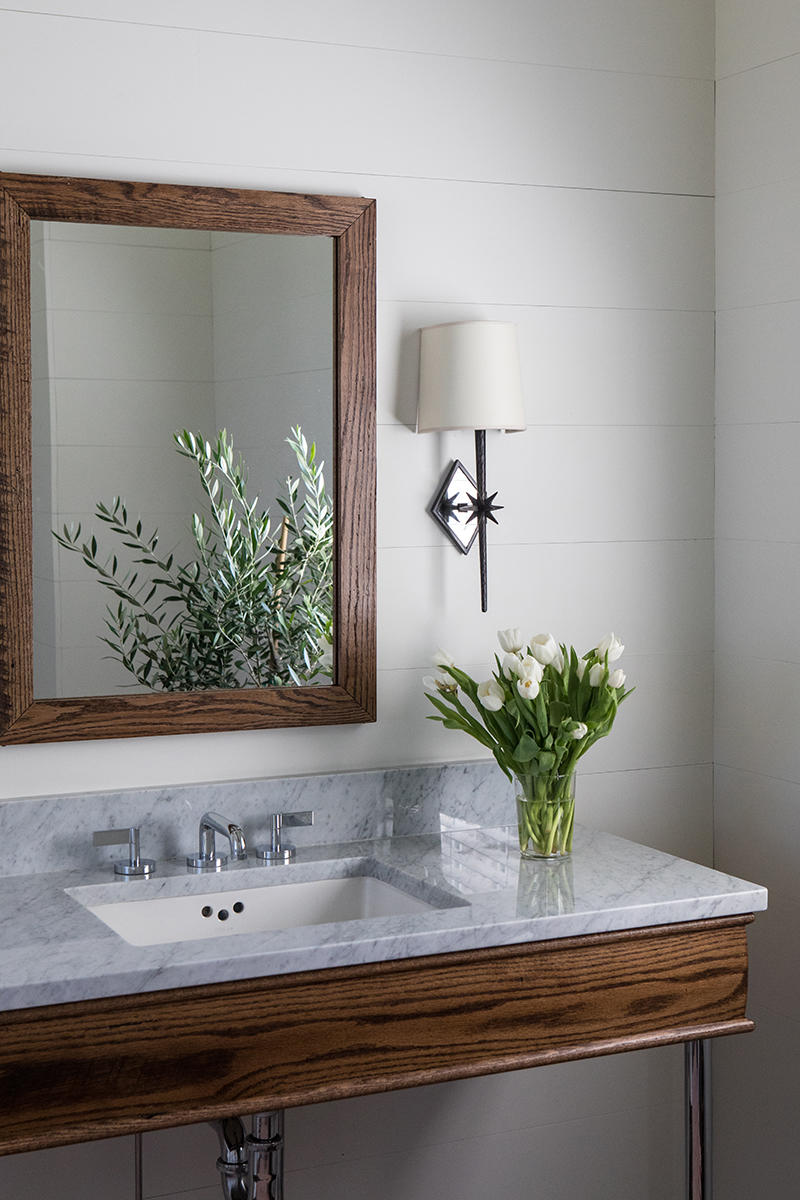
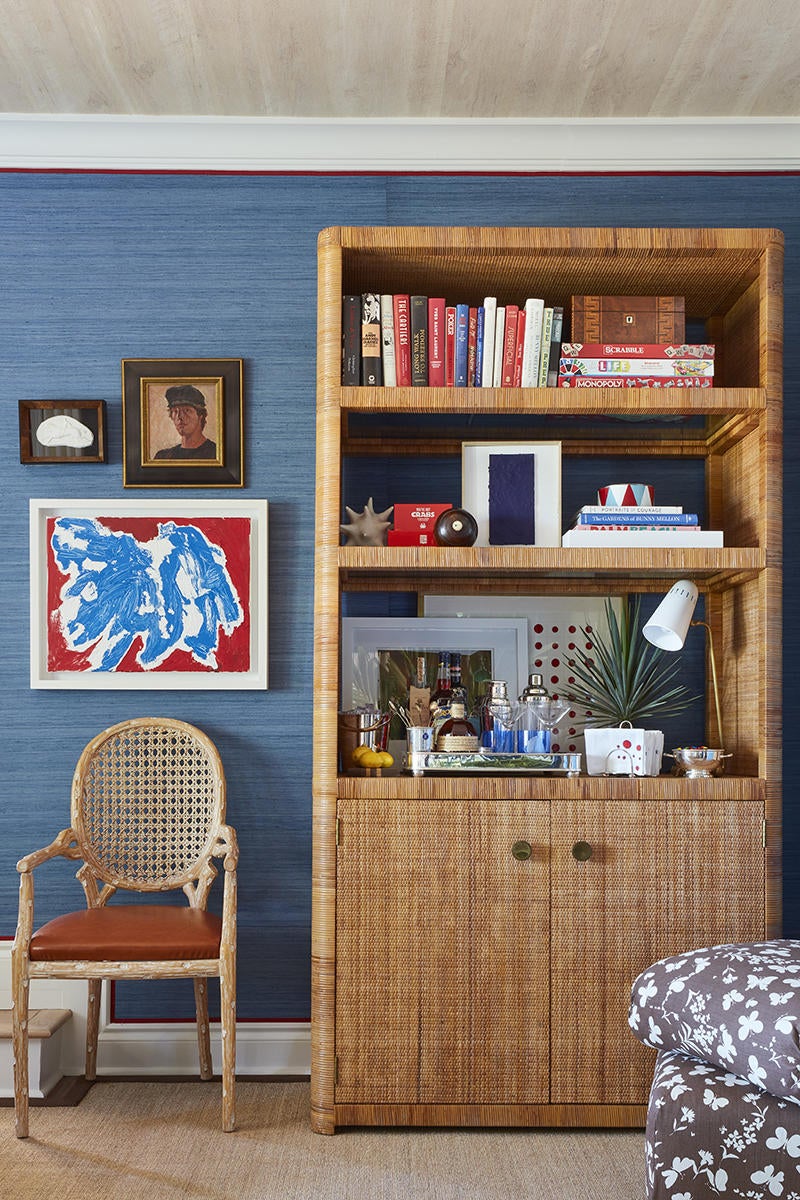
How have you carved out a niche for yourself, and what projects are you saying yes to these days?
Well, we started in the equine business, and our first project was developing a 550-acre horse farm. They told me that they wanted to build a little guest cottage for their polo manager, which turned into a very large guest house. Then they said, “Oh, by the way, we want to redo the barns and do the roads.” I was designing cupolas for the new barns, pulling landscape architects to put in new entranceways, and building a farm office that looked like it was built in 1830—it had a stone portion and a brick portion so it didn’t look new, and we designed it in a way that it could be turned back into a residence if property ever needed to be divided. I spent one summer moving three big mountains of dirt to reclaim a whole section of the property to align and reshape the 10-acre pond, then created a pump house with fountains. It was a really fun project.
It also sounds like it grew well beyond that initial $25,000 contract.
I quickly said, “This contract needs to be rethought.” It ended up being a three-and-a-half-year major project—at one time, it was 90 percent of my business. At the beginning of year three, I realized that I needed to start looking for other large projects, because I didn’t want to worry about making sure that my team had enough work to do. When that project was done, the client thankfully had other properties for us to work on, but we didn’t know at the time that those jobs were coming. We’re finishing up a very large project for them now, but they’re about 10 percent of our firm’s business today. I realized at some point that I had to start balancing what percentage of my business that I allowed clients to be—I was looking at not having too few clients so that if you do ever need to fire a client, it’s not the end of the world.
We had been growing steadily, and with COVID things just really blew up. We moved our office to a high-end residential part of town—there are several fashionable restaurants on our little block, and we’re next door to a great pharmacy that’s a local institution—and even just having our awnings out on Romney Road caught peoples’ eyes.
Was that something you were thinking about when you picked that retail spot?
Absolutely, and it helped us tremendously in the early onset of COVID to get new clients and really start working in this area. We’d done a couple of projects in the Chevy Chase neighborhood over the years, but it wasn’t until we moved over here that we really started acquiring that business. Because so much of our work was out on farms, people in town knew us for that. Our old building was downtown in a pretty federal-style brick building, but you couldn’t see into our windows and capture a sense of our style.
What is a full project load for you right now?
We have about 30 projects at any given stage in the pipeline—of those, about 15 are active, mid- to large-scale projects that are in the beginning or execution phase. We’ve got one really big project in Louisiana that I’m hoping to get wrapped up and installed by the end of the year—we’re hoping construction will be finished in September—where we used a lot of Chateau Domingue finishes. They’re doing a lot of steel and glass doors for us; we found mantles from France and used reclaimed flooring. All of the materials that we’re using are amazing, and I’m so excited for this project because I’ve been working on it for two and a half years—hence the need to expand our team to give our clients the level of service that they’re paying for.
What does that look like in practice?
We’re trying to divvy up within our design team so that each person is responsible for their projects. I want them to serve as a client liaison and keep the project binders and procurement up to date. Then it filters up through me so that I can have all the right information when I talk with clients.
What does your team look like to make that happen, and how do you all interface with clients?
The clients see me and interact with my team—and I’ve been on a very big campaign for the last year and a half of letting them know that they can and should contact my team to get a quicker answer. It’s a shift from how we were working before because I can’t be in 19 places at once. Traveling between Florida, Louisiana, New York and Kentucky, it’s hard to keep up with the day-to-day of everything that’s going on.
We have three design associates, as well as an office and business manager who does all of our accounting, bookkeeping, billing and administrative things. Then we have two part-time handymen that are lifesavers—they help us if things need to be taken to the warehouse or a light fixture needs to be installed. One of them has an electrical license, and while we’re not really trying to play the role of the contractor, that’s been a huge help.
How did that relationship with the handymen come about?
I was doing some work in my house and needed a few things done. Someone said, “This person just moved here from Idaho and they are looking for work. They’re a licensed electrician and work for a home renovation company.” He started with us last fall and we’ve never run out of work for him on any given day—he and his teammate have helped do half of our renovations locally, which is part of the reason we’ve gotten them done so quickly. It’s been great to have that role on staff.
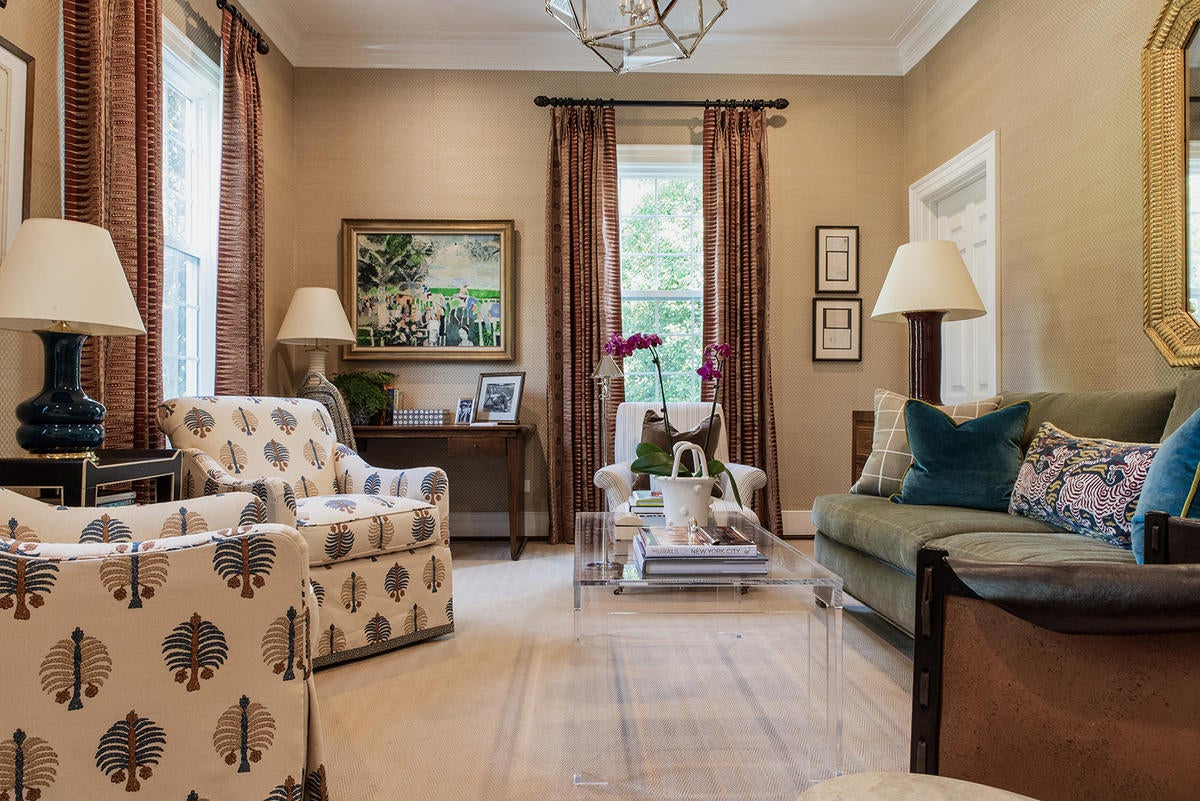
How do you talk about billing and money with your clients?
The firm I started with used to bill by the hour, and every month there would be an issue with a handful of clients. Your bill might be very small one month, and then astronomical the next. It taught me a lot about client expectations. I went to my boss and said, “What if we approach it this way: You can average how much time it’s going to take you to do these drawings. I can average how much time I’m going to spend designing the finishes and procuring the finishes.” I also said, “You’re not marking up on our trade discount—why are you giving them all of these discounts? This is how you make money.” So we tweaked those contracts, and it was really successful.
So you came out of the gate this way in your own business?
I was able to play trial and error with someone else to learn what works and what doesn’t. We bill a project fee at the beginning, and if it’s a soup to nuts project, we’ll bill the design concept and procurement portion upfront. Once we start construction, there’s a management fee that the client typically pays monthly. Then, when we start the interiors, the interior design fee is paid upfront as a retainer. We used to do half-down, but determining when the project was “agreed upon” got a little blurry, so now it’s just upfront. It’s a bit of a test, too. If the client is unwilling or hesitant to pay, it’s telling. They’re not massive retainers, and we really try to be fair when it comes to accurately looking at our time.
I found that for these project fees, clients like to know what they’re paying. We outline what we’re giving them, and the timeline of when we’re going to give it to them. All expectations are established upfront, you pay, we give you a design, that design goes to the builder—or if it’s a decorating or interiors project, it goes to procurement—you sign off on it, you pay deposits on the project, and then we procure and install it. It’s just much more clear-cut.
Have there been growing pains along the way?
We’ve grown and definitely evolved our business model. We put in how many site visits and in-person meetings we’re going to do. We have a client who has blown through that, and that’s the reason we put those safeguards—it’s a very custom project, but it’s requiring more time than what we had originally agreed upon, so now they pay an hourly fee that’s set in the contract. They pay per meeting, and they’re fine with it.
Currently, I’m working with my business consultant and we’re analyzing if we’re going to back out of that management role, or if we’re only going to have a couple of those projects a year. Right now, I will take on large projects and medium sized projects and people that just come in and want a pair of chairs because we have the staff to be able to do that. But those people that we did dining room curtains or a pair of chairs for that they love—to me, that’s free advertising. You never know down the road when they might purchase a new home, buy a second home or want to renovate. So it’s creating those lasting relationships and trying to provide every client with the best customer service and giving them a great value for what they’re getting and us still making money at the end of the day.
How have you approached making a margin on product?
I love The Business of Home Podcast, but one of the things that Dennis Scully frequently talks about is this transparency model—and it’s something I wholeheartedly disagree with.
We charge a project fee. It’s a cut and dry fee based on a set number of site visits and meetings, but that really just covers our overhead and procurement time. We make our profit on the product. Everyone has different business models, but I firmly believe that the price is what the price is. I want the client to trust us that, depending on what our pricing is, we’re giving them a 15 to 40 percent discount off of retail pricing—they’re getting good value, we’re still making money, and I’m able to employ my team and produce a great product and project for them.
I just don’t believe in nickel and diming—that attitude of, “Well, I could buy that myself and save 40 percent.” If that is your client’s mentality, they probably aren’t your client. As a design firm, we see the most intimate part of people’s lives—minus probably their doctor—so it’s about trust.
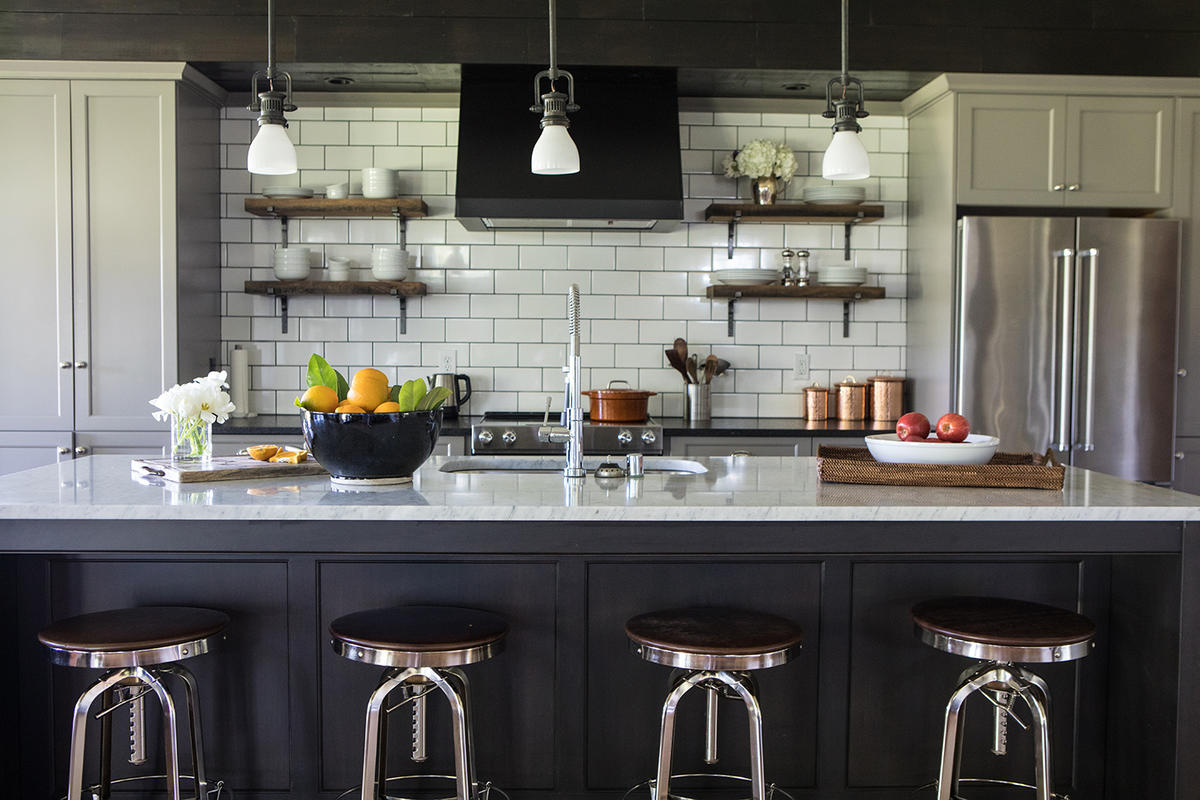
What does leveling up look like for you? What’s the next step up for your firm?
Everyone says they want bigger and better projects. On some level, I get it: It is easier to have fewer, bigger clients than it is to have 90 small clients, even just from a communication standpoint—having a lot of smaller jobs means a lot more bills to go out and a lot more bookkeeping time. But for us to level up, it’s about focusing on growing our team and how we approach our design. I want to start being more creative and thoughtful in the design process of that client experience, like searching for these unique products in that Louisiana project.
One thing that’s been a really big challenge is lead times. I’m buying samples off the floor of Hickory Chair showrooms and recovering them. I will say to a client, “You can wait a year, or we have this style and we can recover it. It will cost more money, but you can have it in eight weeks.” I’m trying to think outside of the box on how to service those clients in a way that meets their expectations even as we try to manage their expectations.
What does success look like for you?
Right now, I’m really happy where we are. I think just growing bigger and better projects, that the store continues to evolve, and that BD Home becomes a resource for other designers. We recently had a designer from Dallas call about one of our case good pieces, so we’re shipping to a project they’re doing in the Bahamas. We’re now showcasing [furniture brands] Keith Fritz Fine Furniture and Dunes and Duchess in our showroom as a result of meeting them at the Design Social Pop-Up in Lexington [in April]. That is success: to continue growing these partnerships. I don’t really have aspirations to have a cocktail table book or a fabric line—I think it’s just really creating good design that people respect, and that we can continue to provide families and clients with really good projects that we stand behind.
I love that definition of success. Most people want the book and the fabric line.
I’m still very young in my career, so that may evolve someday. For now, I have enough friends who have done it to know that it’s a lot of time and investment. When we first met, my business consultant asked me, “What do you want out of life, and how can we help? What can we do to create this roadmap?” I want to be well respected within the industry, but I don’t need a book or a fabric line to tell me I’ve made it.
One of the cool things that came out of the Design Social Pop-Up for me was how, with the evolution of printing and technology, I can now design my own fabric and print it for a client. I don’t necessarily want or need to sell it to the masses, either—my client can pay me to design this fabric just for them. So I’m happy in my own wheelhouse at the moment.
To learn more about Benjamin Deaton, visit his website or find him on Instagram.




























